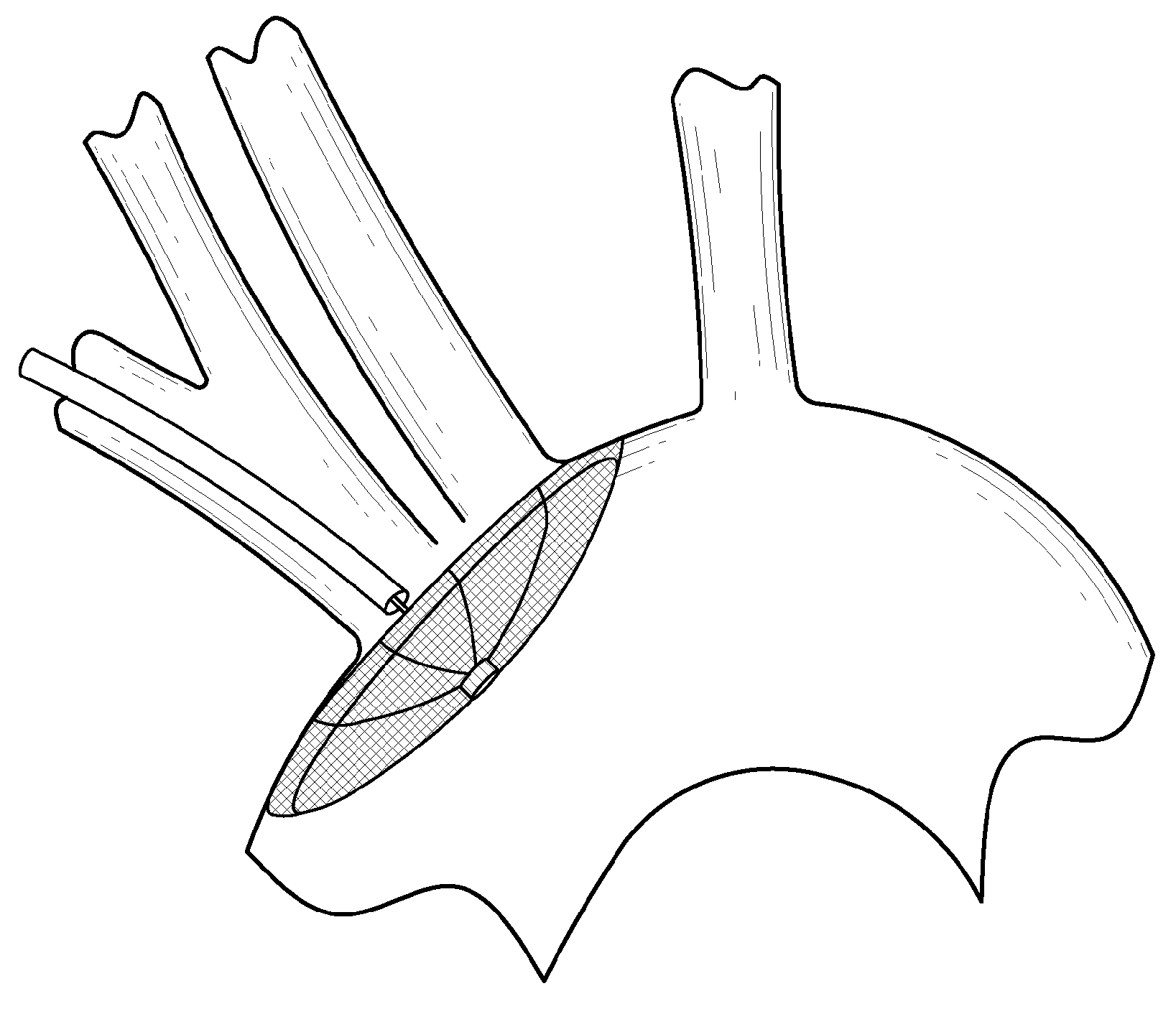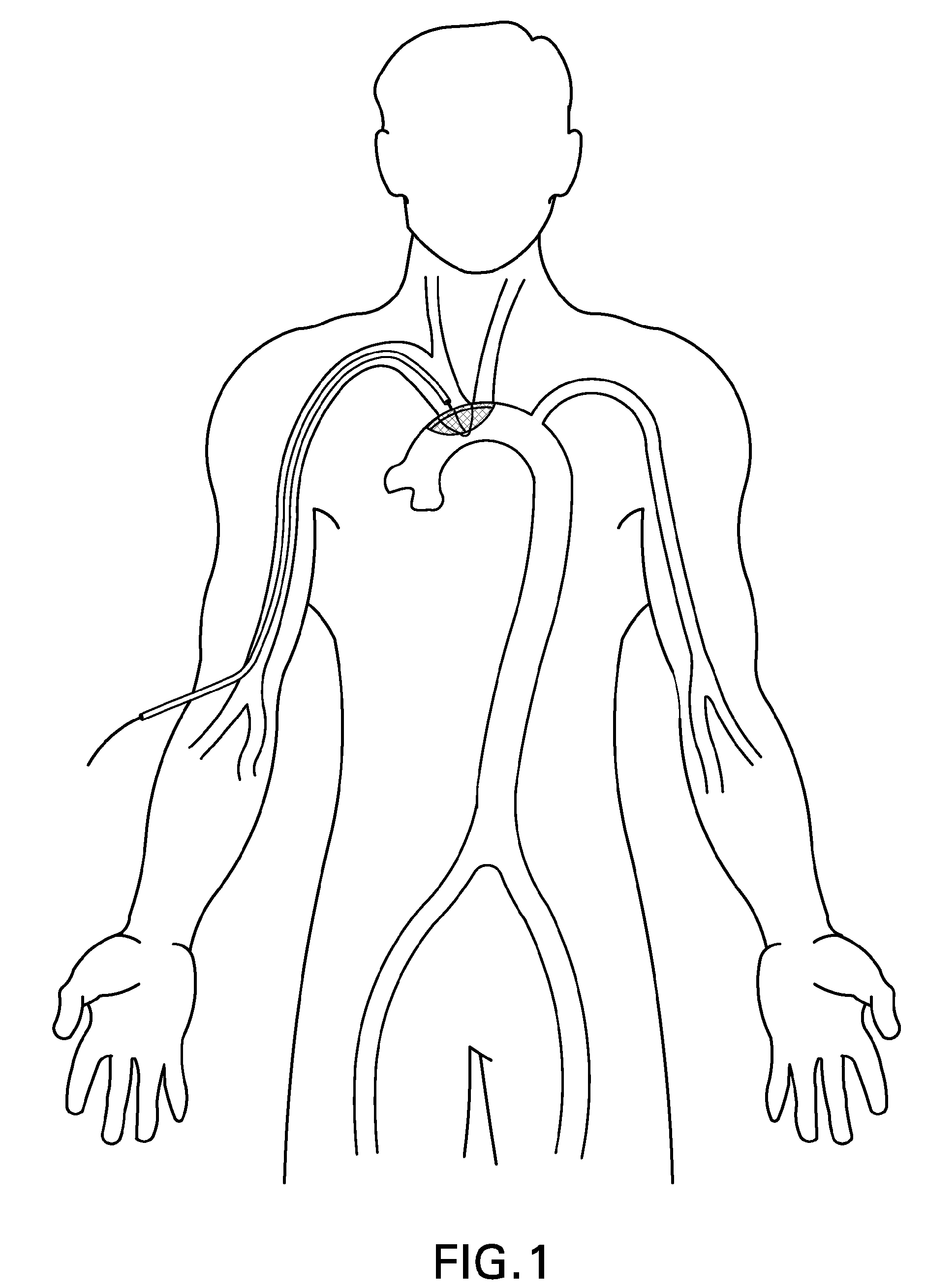Embolic Protection Device and Method of Use
a protection device and embolism technology, applied in the field of embolism protection devices and methods of use, can solve problems such as stroke or even death, difficulty in placement and retrieval, and carotid emboli
- Summary
- Abstract
- Description
- Claims
- Application Information
AI Technical Summary
Problems solved by technology
Method used
Image
Examples
Embodiment Construction
Nitinol Frame:
[0008]A preferred embodiment of the nitinol frame is built from a single laser-cut piece of material. The frame can also be built from separate wires that are formed and welded together. The frame is formed so that it is intentionally bent back into a boat-like shape to press against the aortic wall when it is deployed. When laid flat, the frame measures 60 mm along its long axis to ensure coverage of both the brachiocephalic and left common carotid artery over a wide range of anatomies. It could also be made a different size. There are three thicknesses along the perimeter of the frame to provide varying stiffness as needed. The thinnest sections at each end are critical to function—the way the device collapses would cause the nitinol to permanently deform if they were thicker, which is a gating issue for working in the 6F profile. The deploy / collapse sequence emanates from the central struts and continues to the tips of the device. One benefit of this design is that ...
PUM
 Login to View More
Login to View More Abstract
Description
Claims
Application Information
 Login to View More
Login to View More - R&D
- Intellectual Property
- Life Sciences
- Materials
- Tech Scout
- Unparalleled Data Quality
- Higher Quality Content
- 60% Fewer Hallucinations
Browse by: Latest US Patents, China's latest patents, Technical Efficacy Thesaurus, Application Domain, Technology Topic, Popular Technical Reports.
© 2025 PatSnap. All rights reserved.Legal|Privacy policy|Modern Slavery Act Transparency Statement|Sitemap|About US| Contact US: help@patsnap.com



